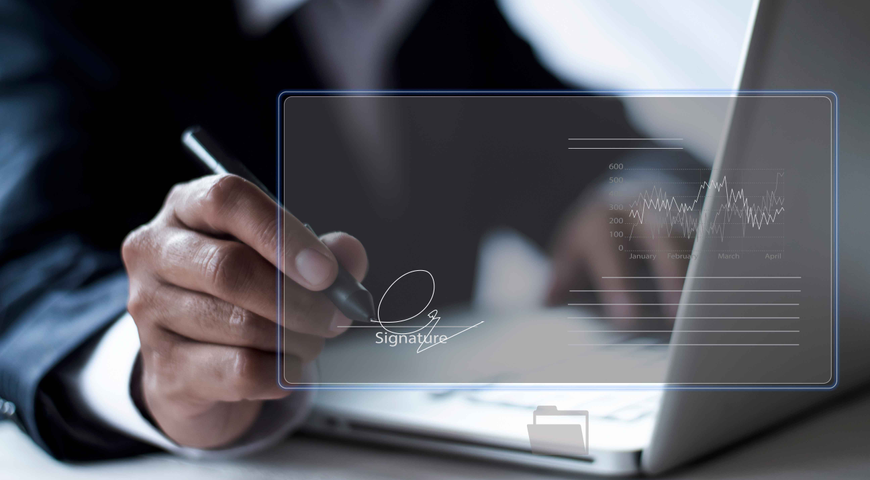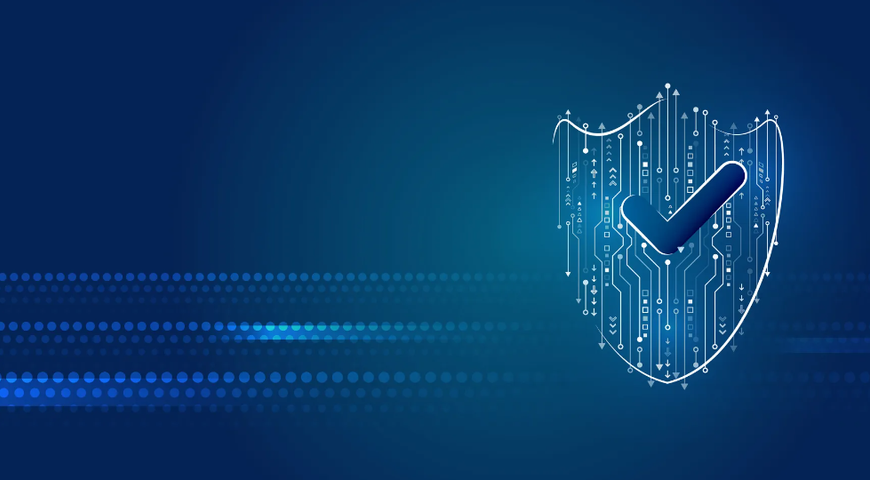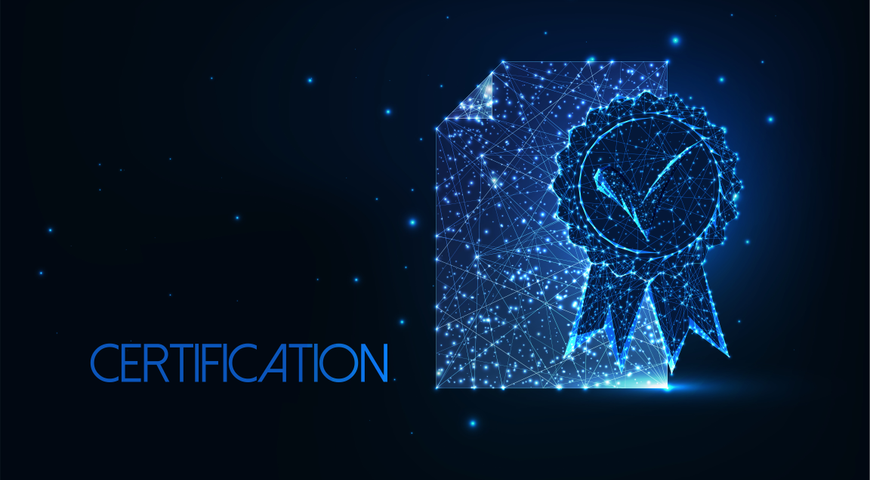
The concept of the “paperless” business is perhaps best exemplified by the rise of electronic signatures, often referred to as eSignatures. These digital versions of documents and the associated endorsement have altered the landscape of document signing, presenting a seamless, secure, and legally binding alternative to the traditional — and rather obsolete — method of printing, signing and scanning.
In this article, we will dive into the definition of eSignatures, their practical use, aspects of eSignature security, and the many compelling reasons that digital signing has become an invaluable resource for both individuals and organizations.
Let’s explore how eSignatures have established themselves as a central component in the ever-evolving digital arena, simplifying processes and accelerating workflows along the way.
Understanding eSignatures
Electronic signatures, also known as eSignatures, are a method of signing documents and verifying the signer's identity through digital means. The result is a secure and legally recognized way to sign agreements, contracts or other important paperwork without the need for physical paper and ink.
One of the key advantages of eSignatures is convenience. They enable individuals and businesses to streamline their processes, reduce paperwork, and expedite transactions. Gone are the tedious days of printing, scanning, faxing and mailing contracts and agreements.
Furthermore, eSignatures often come with built-in security features like encryption and audit trails, making them more secure and robust than a signed paper document.
Legally, eSignatures are recognized in many countries, thanks to laws and regulations that validate their use. While the specific rules may vary (See: International laws and regulations governing eSignatures below), eSignatures have become a crucial tool for modern businesses, offering efficiency, security and flexibility.
What is an eSignature?
eSignatures replace the old notion of “putting ink to paper” by capturing a person's intent to sign electronically through various methods. Users may eSign by typing their name, drawing a signature on a touchscreen, or through the use of biometrics like a fingerprint.
These methods ensure that the signature cannot be easily forged, and the document remains tamper evident.
What are the differences between eSignatures and digital signatures?
As we dip into the eSignature basics, it’s important to pin down the correct terminology. The terms “eSignature” and “digital signature” are often used interchangeably, but they have distinct differences.
“eSignature” is an umbrella term for a broader array of electronic signing methods, which can range from typing a name to using a touchscreen for signature capture. These methods might lack the advanced cryptographic techniques found in digital signatures, potentially resulting in variations in security and authentication. As such, eSignatures are typically used for less critical or internal documents and can be subject to varying degrees of legal recognition, depending on applicable regulations.
On the other hand, “digital signatures” are a specific type of eSignature characterized by their use of public-key-infrastructure (PKI) technology to provide robust security and authentication. They create a unique identifier for the signer, ensuring a high level of trust and fraud risk mitigation. Digital signatures are commonly the best choice for legally binding documents, financial agreements, and any scenarios requiring a higher level of security and universally recognized legal validity.
All told, the choice between eSignatures and digital signatures hinges on the specific document's security and legal requirements, as digital signatures offer a more widely recognized solution for critical or sensitive applications.
Legal implications of eSignatures
The specific legal viability of eSignatures can vary from one jurisdiction to another. In general, most countries have laws or regulations on the books that recognize the validity of eSignatures, provided certain requirements are met. (See: eSignature validity and enforceability below.)
While eSignatures are broadly recognized, organizations should defer to the specific laws and regulations of their jurisdiction to ensure their documents are legally binding. In some cases, certain types of documents, like wills or real estate transactions, may have additional requirements.
Generally, eSignatures are suitable for a wide range of transactions, but for critical or highly regulated documents, digital signatures may be necessary due to their advanced security features and broader legal recognition.
International laws and regulations governing eSignatures
eSignature laws vary globally, but some key regulations include:
ESIGN Act (USA): The Electronic Signatures in Global and National Commerce Act (ESIGN) was enacted in the United States in 2000. It recognizes electronic signatures as legally valid and enforceable for most transactions, with a few exceptions such as certain court orders, living wills and power of attorney documents.
UETA (USA): The Uniform Electronic Transactions Act (UETA) is a state-level law in the United States which has been adopted by every U.S. state, excluding New York. It complements the ESIGN Act and provides a legal framework for electronic transactions.
eIDAS (EU): The Electronic Identification and Trust Services (eIDAS) regulation is an E.U.-wide regulation that came into effect in 2016. As a legal framework for electronic signatures, eIDAS ensures cross-border recognition and the security of eID and eSignatures.
PEMRA (Canada): In Canada, the Personal Information Protection and Electronic Documents Act (PIPEDA) outlines the legality of electronic signatures. Provincial laws may apply in addition to what is outlined in the national regulation.
PAA (Australia): The Electronic Transactions Act 1999 governs eSignatures in Australia, recognizing their legality in most transactions.
Indian IT Act (India): The Information Technology Act 2000, along with its amendments, provide the legal basis for eSignatures and electronic transactions in India.
ZertES (Switzerland): The Swiss Federal Act on Electronic Signatures (ZertES) is the primary law that governs electronic signatures in Switzerland, ensuring their legal validity.
eSignature validity and enforceability
An eSignature is typically considered valid and legally binding when it meets certain criteria. These criteria can vary depending on the specific laws and regulations in the relevant jurisdiction, but in general, for an eSignature to be considered enforceable, it should include:
● Intent to sign: The signer must clearly intend to sign the document electronically. This can be indicated through opt-in actions like clicking a "Sign" button or agreeing to terms of service.
● Consent: All parties involved in the transaction must be informed of and consent to conducting the transaction electronically.
● Identity verification: There should be a reliable method to verify the identity of the signer, ensuring that the eSignature is legitimate.
● Audit trails: Many regulations require the maintenance of audit trails or document tracking to keep a running tab of changes made to the signed document.
● Compliance with applicable laws: The eSignature should conform to the laws and regulations governing electronic signatures in the jurisdiction in which it’s used.
Regulations may require the use of advanced electronic signature technologies, such as digital signatures, in certain cases where a higher level of security and authentication is needed.
It's crucial to familiarize yourself with the specific e-signature laws and regulations in your region to ensure that your e-signatures are legally valid and enforceable. For particularly important or regulated transactions, consulting legal counsel and choosing certified e-signature solutions is recommended to ensure compliance.
Do eSignatures carry any security risks?
Yes, as with any digital process, there are potential security risks associated with e-signatures. While these risks are manageable, users must be aware of the dangers and take appropriate measures to mitigate them.
Some possible security concerns with eSignatures include:
● Authentication: Ensuring that the person signing a document is who they claim to be is an important step. If the authentication process is weak or compromised, malicious actors could use the system to fraudulently sign documents.
● Phishing and social engineering: As with almost anything online these days, the largest risks stem from the users themselves. eSignature requests can be used as bait in phishing attacks, and social engineering scams can trick signers into providing their credentials.
● Forged signatures: While eSignatures can be secure, a poorly-designed solution could be vulnerable to forgery or tampering.
● Data privacy: Storing and transmitting electronic signatures and personal data must be done securely to protect against data breaches and privacy violations.
● Vendor choice: When using third-party e-signature providers, one must ensure the vendor follows security best practices and complies with applicable regulations.
● Legal compliance: Failing to comply with eSignature laws and regulations can pose legal risks, potentially making eSignatures unenforceable.
To mitigate these risks, individuals and organizations should:
● Use trusted eSignature service providers that employ strong security measures.
● Educate employees and users about potential security threats related to e-signatures, including phishing and social engineering.
● Implement 2 factor authentication (2FA) wherever possible.
● Regularly patch software to protect against vulnerabilities.
● Ensure compliance with applicable data protection and e-signature laws.
● Keep a record of electronically signed documents, including auditable logs or change notes, to monitor for any unusual activity.
Understanding eSignature security standards
The specifics may vary by region and industry, but some of the commonly recognized standards include:
Public-key infrastructure (PKI): PKI provides a framework for secure electronic signatures. It employs digital certificates, cryptographic keys, and certificate authorities to authenticate the signer and protect document integrity.
Advanced encryption standards (AES): AES is widely used to encrypt eSignature data, ensuring that it remains confidential both when in transit and when at rest.
Transport layer security (TLS): TLS establishes encrypted connections to prevent eavesdropping and tampering. This protocol can help prevent electronically signed documents from being intercepted or manipulated.
X.509 Standard: X.509 is a widely accepted standard for digital certificates, which play a key role in PKI-based eSignatures.
ISO 27001: ISO 27001 is an international standard for information security management systems (ISMS) that applies broadly to all aspects of cybersecurity and data protection. Organizations that implement eSignatures often adhere to ISO 27001 to ensure robust security practices.
eIDAS Regulation: In the European Union, the eIDAS (Electronic Identification and Trust Services) regulation sets standards for electronic signatures, defining various levels of eSignature security.
NIST Guidelines: The National Institute of Standards and Technology (NIST) provides guidelines and standards for secure eSignatures in the United States.
HIPAA and GDPR Compliance: For eSignatures used in healthcare or involving personal data, compliance with the Health Insurance Portability and Accountability Act (HIPAA) in the U.S. and the General Data Protection Regulation (GDPR) in the E.U. is mandatory.
Best practices for implementing eSignatures
Effective implementation of eSignatures can be ensured by following best practices around security, compliance and a smooth user experience. A few key eSignature best practices include:
● Choose a reputable eSignature provider: Your eSignature experience will only be as good as your provider. Select a trusted eSignature vendor that has a track record of reliability and a solid approach to security.
● Compliance documentation: “Paperless” workflows don’t preclude the need for paper trails. Protect yourself by maintaining records showing compliance with eSignature laws and regulations.
● Understand legal requirements: Familiarize yourself with eSignature laws and regulations in your region and industry to ensure compliance.
● Authenticate signers: Avoid fraud and tampering by using strong identity verification methods to confirm the identity of signers. These can include multifactor authentication or knowledge-based authentication questions.
● Use secure transmission and storage: Implement encryption (e.g., TLS and AES) for data in transit and at rest to protect eSignature data from unauthorized access.
● Secure integration: If integrating eSignatures with other systems, ensure that the integration is designed to protect sensitive information as it moves between platforms.
Choosing the right eSignature solution
When choosing an eSignature platform, consider the critical factors in this checklist:
● Security and compliance: Strong security measures are in place, and the platform is compliant with relevant laws and regulations.
● Authentication: The solution provides options like multifactor and biometric verification.
● Usability: The solution is user friendly to minimize frustration and user errors.
● Integration: The platform is compatible with any existing software that requires integration.
● Document management: Version control and storage options are provided.
● Audit trail: The eSignature tool maintains detailed, tamper-evident records.
● Mobile access: There are mobile-friendly features that allow for transmission and signing of documents on the go.
● Signature types: Support is available for various signature levels.
● Scalability: Ensure the platform can grow with your changing needs.
● Support: Ensure the vendor has a history of good customer service and tech support.
● Pricing: Compare pricing models and be aware of potential hidden costs.
● Compliance documentation: Request proof of compliance with laws and regulations.
● Reviews: Read user reviews and evaluate the platform's reputation.
Integrating eSignatures into business processes
Incorporating eSignatures into business processes can streamline workflows, improve efficiency and cut down on paperwork. The following is a generalized roadmap for how to effectively bring eSignatures into your organization:
- Identify use cases: Determine where eSignatures are to be used. Common use cases include contracts, agreements, internal forms and HR documents. (See Common use cases of eSignatures below.)
- Select an eSignature solution: Choose a reliable electronic signature platform or service that aligns with your business needs and budget. Use the checklist in the previous section to evaluate your options.
- Integration: Integrate the eSignature solution with your existing systems and software, such as document management, CRM, or cloud storage to create a seamless workflow.
- Document preparation: Prep the documents you want to have electronically signed. This usually involves creating templates or importing existing files.
- User training: Provide training to employees and clients who will be using the eSignature system to ensure they are comfortable with the process and aware of security risks.
- User experience: Make the eSigning experience as user friendly as possible, ensuring that it's easy for signers to complete their documents. Test the process to ensure it’s not confusing or cumbersome.
- Authentication: Set up authentication methods to verify the identity of signers.
- Legal Compliance: It falls upon your organization to ensure your eSignature process complies with eSignature laws and regulations in your jurisdiction. Take care that all the regulatory boxes are checked to ensure your documents remain enforceable.
- Use automation: Create automated workflow processes that are triggered by eSignatures to reduce workloads and chances for human error. These automation processes can include notifications, approvals and document routing.
- Storage and retrieval: Establish a system for storing and retrieving electronically signed documents securely. Cloud-based storage solutions are often used for this purpose.
- Security measures: Implement data encryption, access controls, and regular security audits to protect eSignature data. Again, make sure to employ any layers of security or record keeping mandated by laws in your jurisdiction.
- Monitor and audit: Regularly monitor eSignature activities, audit trails and compliance to ensure everything is functioning as intended.
By following these steps and integrating eSignatures into your business processes, you can leverage the benefits of digital signatures, including increased efficiency, reduced administrative overhead and improved accuracy, while ensuring legal compliance and security.
Common use cases of eSignatures
eSignatures have found their way into numerous applications across various industries thanks to their convenience, efficiency and security. Below are common use cases across sectors which have widely adopted eSignatures:
1. Healthcare
● Patient consent forms: Healthcare providers use eSignatures for patients to consent to treatments and procedures.
● HIPAA compliance: Compliance documents, including privacy notices and agreements, can be signed electronically.
● Telemedicine: Remote patient consultations and prescriptions can be authorized with eSignatures.
2. Legal
● Contracts: Legal professionals use eSignatures for client agreements, retainer agreements, and other legally-binding contracts.
● Court Documents: Filing legal documents with electronic signatures is becoming more common, although some specific court documents still require ink on paper.
3. Finance
● Loan applications: Banks and lenders use eSignatures for mortgage applications, loan agreements and other financial documents.
● KYC and AML documents: Financial institutions collect customer information and consent electronically for know your customer (KYC) and anti-money laundering (AML) compliance.
4. Real estate
● Property sales contracts: Real estate agents and buyers/sellers use eSignatures for property sales agreements and disclosures.
● Lease agreements: Landlords and tenants can sign lease agreements electronically.
● Property Management: Property managers often use eSignatures for maintenance requests, rent payment authorizations, and tenant notices.
The future of eSignatures
As one might expect, eSignatures continue to evolve and adapt to technological advancements and changing business needs. Here are some emerging trends in the eSignature landscape to look out for:
1. Mobile eSignatures: The use of smartphones and tablets for electronically signing is on the rise. As everything from remote workplaces to online ordering increase in popularity, eSigning tech caters more and more to the user on the go.
2. Voice and biometric signatures: Voice recognition and biometric authentication (such as fingerprint or facial recognition) have advanced sufficiently to be used as a reliable means of confirming a user’s identity.
3. Blockchain Integration: Some eSignature platforms are exploring blockchain technology to enhance document security and provide irrefutable proof of signature and document history. Blockchain documents are already being used to track the sales and ownership of such things as fine art and intellectual property.
4. Remote online notarization (RON): RON services allow notaries to perform their duties online, and are gaining traction in regions where electronic notarization is legally recognized.
5. International expansion: Many eSignature providers are expanding to support international eSigning, including legal compliance in various countries, and support for varied languages.
6. Augmented reality (AR) signatures: Some platforms are experimenting with AR technology to enhance the authenticity of digital signatures, making them more akin to handwritten signatures.
Enhanced compliance features: As regulations evolve, eSignature providers are adding features to ensure ongoing compliance with growing legal requirements.
7. Document Collaboration: Real-time collaboration features are being incorporated into eSignature platforms to streamline document editing, negotiation and signing among multiple parties.
8. Machine learning for risk assessment: Machine learning algorithms are being developed to assess risk associated with individual eSignature transactions, improving security and fraud prevention.
9. Cloud and hybrid deployments: eSignature services are moving to the cloud or offering hybrid deployment options, enabling scalability and easier access for remote users.
This is certainly a technology on the rise, and we can expect innovation to impact eSignature tools accordingly. As eSignature tech continues to evolve, businesses and users can expect even more flexibility, security and convenience in the eSigning process.
Conclusion About E-Signatures
As we’ve seen, eSignatures transformed the way organizations manage their documents in a highly digital world. These alternatives to pen-and-ink contracts and forms have ushered in an era of streamlined, secure and legally-binding document signing that can be done quickly, easily and from anywhere with an internet connection.
The evolution of eSignature solutions highlights their role in the ever-changing realm of digital transformation, simplifying processes and expediting workflows. As both businesses and individuals continue to adapt to user demand, eSignatures help them maximize convenience, security, and productivity. Without a doubt, this tech has firmly established itself as a cornerstone of modern document management, ushering in a paperless future that is both efficient and secure.
Authenticate Your Data - Get Your eSignature Today!
About Acronis
A Swiss company founded in Singapore in 2003, Acronis has 15 offices worldwide and employees in 50+ countries. Acronis Cyber Protect Cloud is available in 26 languages in 150 countries and is used by over 20,000 service providers to protect over 750,000 businesses.




